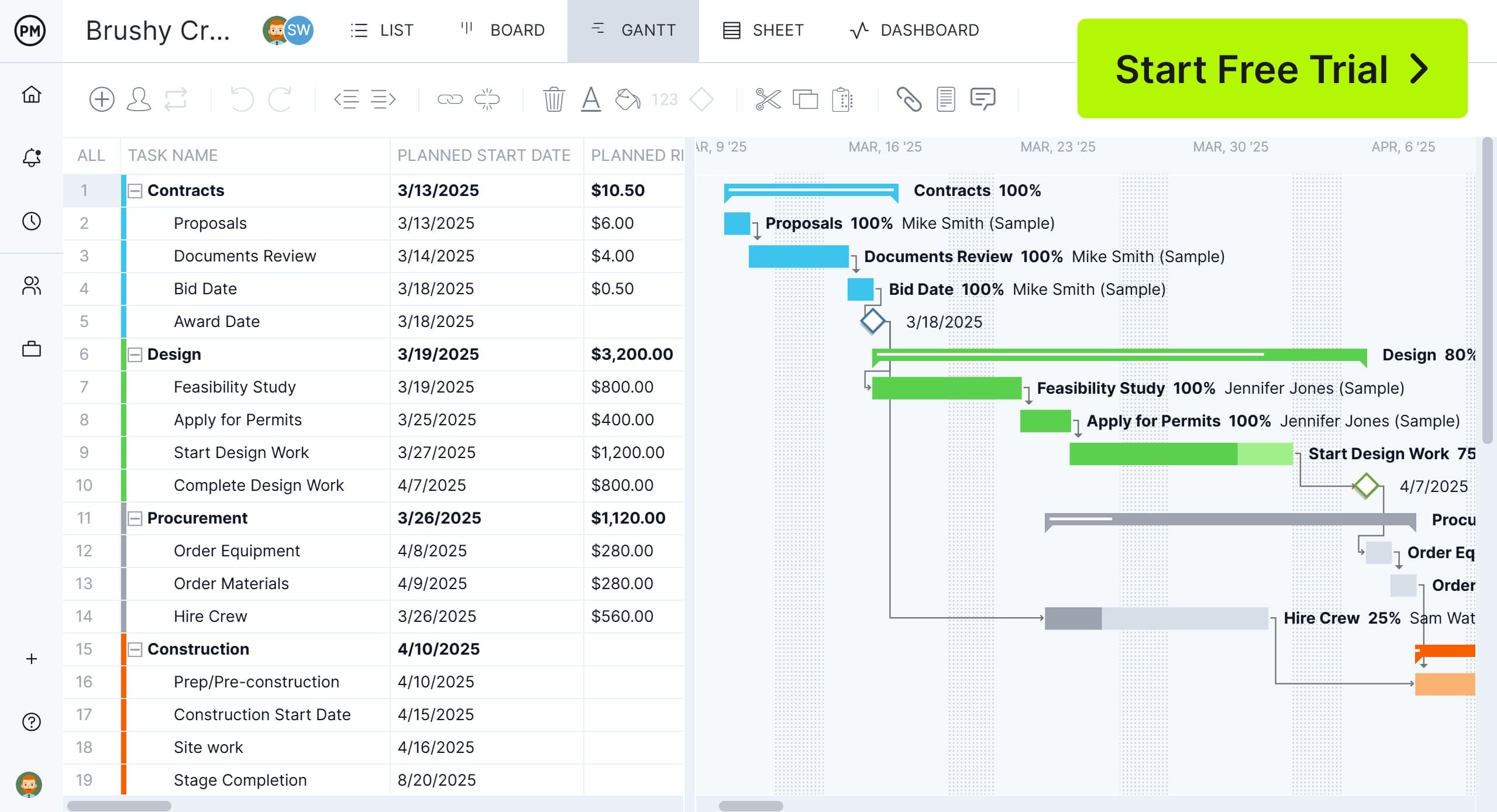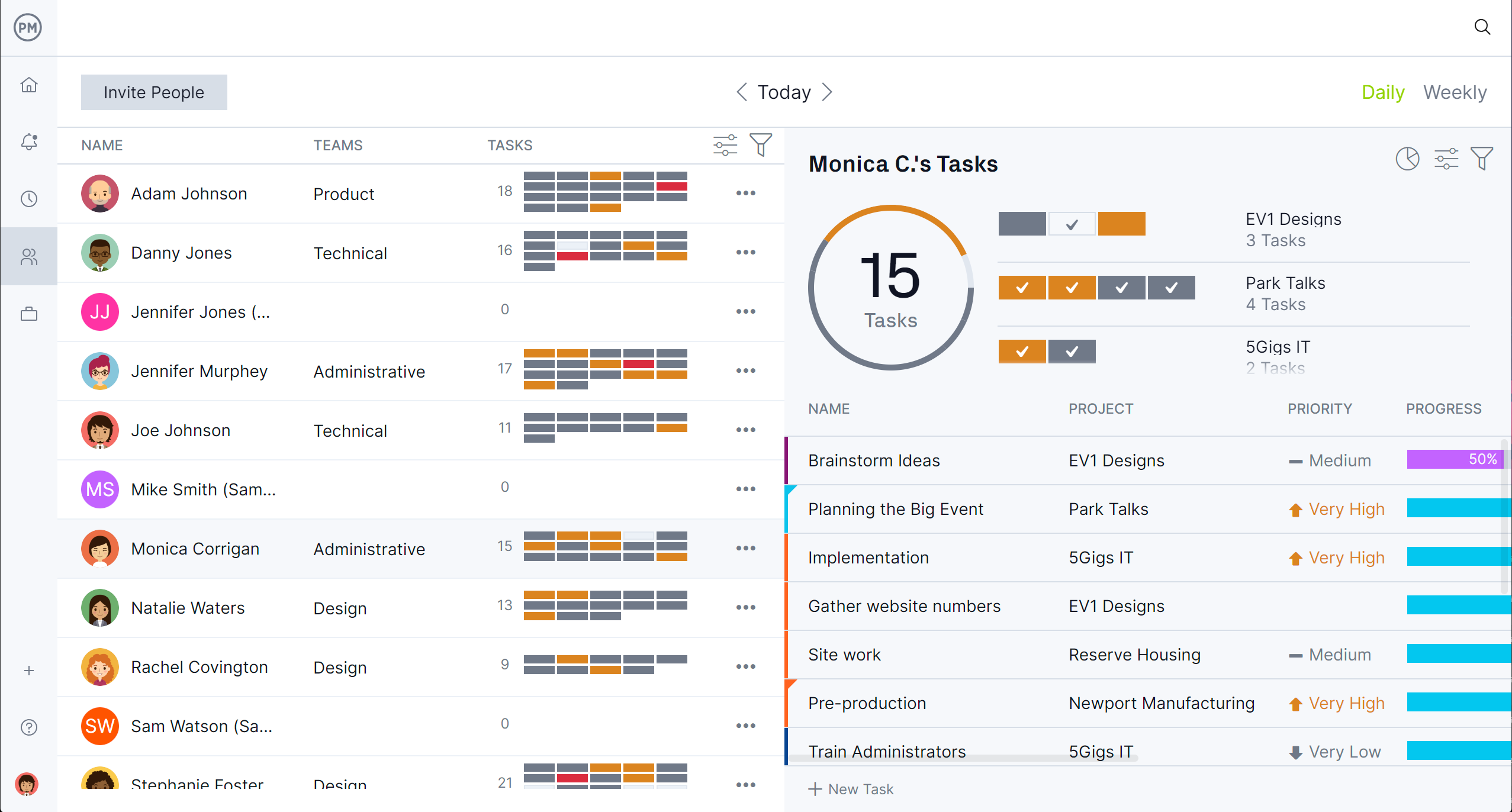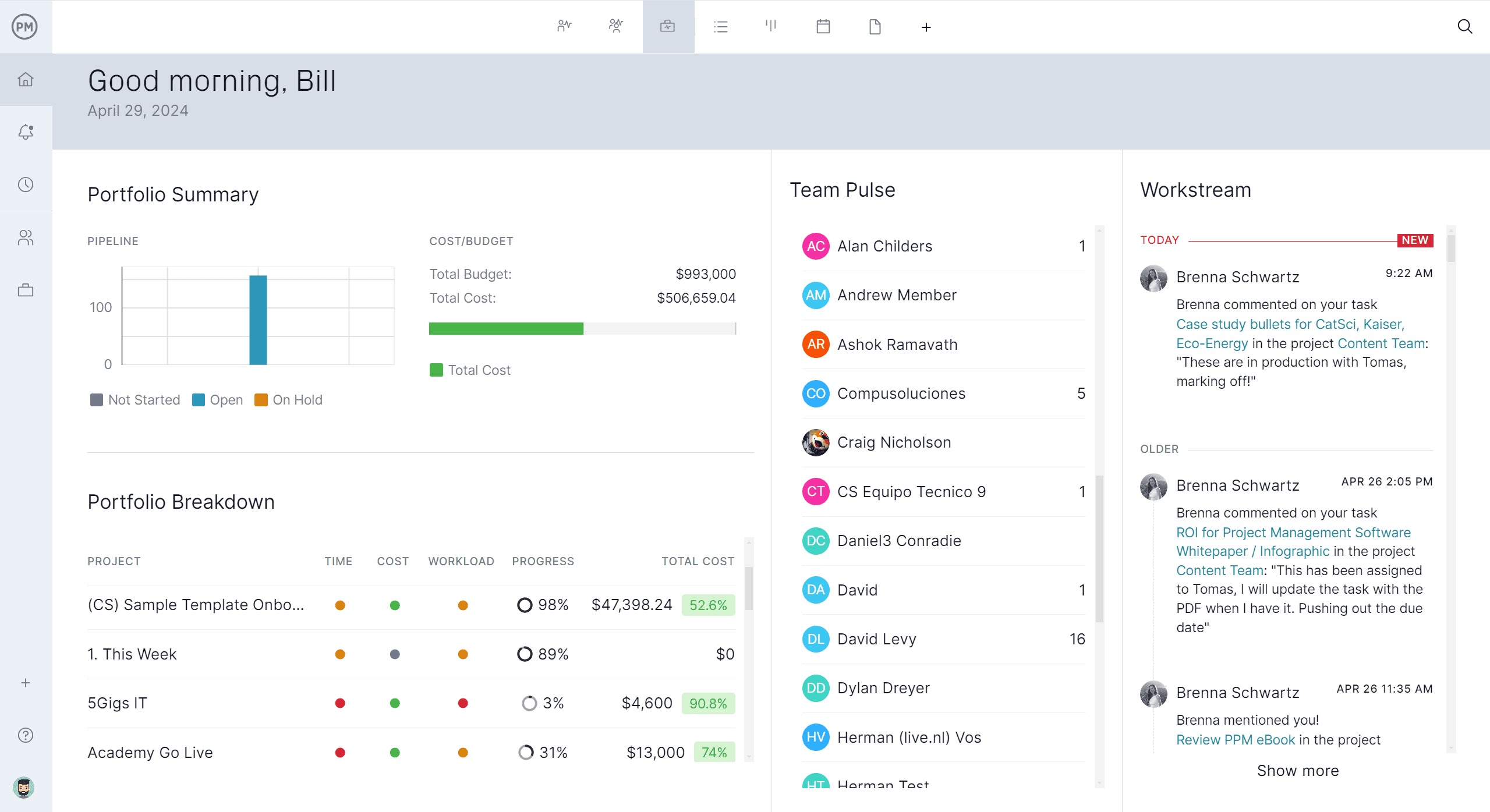A procurement plan is an essential part of project planning that outlines what goods or services need to be acquired, how they will be procured and which vendors are best suited for the job. It ensures that procurement efforts align with an organization’s strategic goals and project timelines while complying with internal policies and legal obligations.
Download this free procurement plan template for Excel to simplify this complex process. It provides a clear structure to document procurement needs, evaluate vendor options and manage contracts efficiently. This helps reduce delays, miscommunication and non-compliance across departments, leading to better project outcomes.

ProjectManager’s free procurement plan template for Excel
Why Use a Procurement Plan Template?
This procurement plan template is a valuable tool for standardizing and optimizing how organizations acquire goods and services. It encourages proactive planning by outlining what needs to be purchased and the rationale behind those decisions. It also clarifies how procurement will be conducted—whether through competitive bidding, direct purchases or framework agreements—based on the complexity and value of each item or service.
In addition, it ensures everyone involved understands their role in the process, from identifying needs to evaluating vendors and managing contracts. With clear timelines and documentation practices in place, the template also reduces legal and compliance risks, offering traceability at every stage. Ultimately, it helps teams avoid delays, overspending and vendor-related issues by providing a centralized, well-organized approach to procurement planning.
The procurement plan template also informs a project’s Gantt chart by aligning the acquisition of goods and services with the overall project timeline, ensuring that resources are available when needed and preventing delays caused by procurement bottlenecks. It identifies key procurement milestones, synchronizes resource availability with project tasks and helps define task dependencies among other things. To get the full advantage of the procurement plan template and Gantt chart, project professionals use project management software.
Create Procurement Plans Online with ProjectManager
ProjectManager is award-winning project and portfolio management software with robust Gantt charts that schedule tasks, resources and costs. Use them to evaluate bids, issue purchase orders and link all four types of task dependencies to avoid cost overruns. Then, track and oversee procurement plans in any of our five project views.
- Break down the procurement process into manageable tasks on Gantt charts
- Generate dashboards and reports on procurement spending and vendor performance
- Track and analyze procurement spending patterns with free guest licenses. Try it free

When to Use This Procurement Plan Template
This template is ideal at the beginning of any project or operational planning phase where external resources are required. Use it when launching a new initiative, negotiating vendor contracts or updating procurement strategies. It’s especially useful for projects with multiple stakeholders, high-value purchases or regulatory requirements. By applying it early, teams can ensure alignment, secure better vendor terms and avoid costly surprises later.
It’s also helpful when managing procurement across departments or geographic locations, where standardization becomes critical. If you’re entering a fiscal year and need to forecast expenditures or respond to funding requirements that demand procurement transparency, this template brings consistency and clarity to the process.
Additionally, it can serve as a reference point throughout the project lifecycle, making it easier to track progress, maintain accountability and adjust plans as needed. Whether you’re working on capital projects, service contracts or routine supply chains, this template supports clear and strategic procurement planning.
Who Should Use This Free Procurement Plan Template?
This procurement plan template is designed for project managers, procurement officers, operations coordinators and department heads responsible for acquiring goods or services. It’s especially useful for professionals managing complex projects, coordinating with multiple vendors or working within strict regulatory or budgetary frameworks. Small businesses, nonprofit organizations and large enterprises alike can benefit from its structured approach to planning and documentation.
How to Use This Procurement Plan Template
Using this procurement plan template is simple and intuitive. It breaks down the procurement process into clear, actionable steps to help you manage each phase with confidence and clarity. Follow the guide below to get the most out of the template.
1. Set Procurement Objectives
The first step in using the template is to define your procurement objectives. These objectives clarify the purpose of the purchases, how they support project or business goals and what success looks like. Setting clear objectives from the start helps guide decisions around budgeting, vendor selection and delivery timelines.
2. Describe the Items to Be Procured
Next, identify and list the goods or services that need to be procured. The template includes dedicated columns for item descriptions, specifications, measurement units and unit pricing. This level of detail ensures that all stakeholders understand exactly what’s required, which reduces the risk of miscommunication or procurement errors.
Use the description field to explain what the item is and the purpose it serves. Add the specifications to outline details such as size, model or quality standards. Then, include the unit of measure (e.g., pieces, liters, hours) and the expected cost per unit. This information helps forecast the total, select the right vendors and ensure the procured items meet the project’s technical needs.
3. Define the Procurement Method
The next step is to determine the procurement method that best suits your needs. A procurement method refers to how you’ll approach acquiring the items or services, such as competitive bidding, direct purchasing or using a preferred vendor list. The chosen method often depends on factors like budget, urgency, market availability and internal policies. Clearly defining this in your plan supports transparency and consistency in how suppliers are engaged.
4. Establish a Vendor Selection Criteria
Once your needs and methods are clear, the next critical step is to set criteria for evaluating and selecting vendors. This ensures an objective, transparent and fair selection process. The template includes fields to guide your assessment: technical capability, relevant experience, financial stability, pricing, compliance and certifications, lead time and delivery capacity and quality assurance. These categories help compare vendors on more than just cost.
For instance, a vendor with solid technical capabilities and certifications may offer better long-term value even if their pricing is slightly higher. Prioritizing delivery capacity and quality assurance also ensures timely and consistent performance. Defining these criteria upfront leads to better vendor relationships and reduces the risk of procurement delays or contract disputes.
5. Establish a Procurement Timeline
After defining vendor criteria, it’s important to map out the timeline for each procurement activity. This helps coordinate tasks, assign deadlines and track progress. The template includes fields for the activity name, responsible party, start and end dates, dependencies and status. These elements help teams anticipate bottlenecks, manage handoffs and ensure timely delivery.
Setting realistic dates and noting dependencies, such as budget approvals or contract reviews, improves overall planning and accountability. Regularly updating the status field also provides a quick visual on which activities are pending, in progress, or completed.
6. Define Roles and Responsibilities
Clearly defining roles and responsibilities ensures everyone involved in the procurement process understands their part. The template allows you to list team members, their roles and specific duties. For example, you can assign one person to manage vendor communication, another to oversee contract review and someone else to handle budget tracking.
This clarity prevents confusion, reduces overlap and ensures accountability throughout the procurement lifecycle. It’s especially helpful for large teams or multi-department projects where coordination is essential. A well-structured roles section keeps workflows smooth and communication transparent.
7. Define the Contract Management Strategy
A contract management strategy outlines how contracts with vendors will be overseen from initiation to closure. This step ensures that agreements are not only signed but also actively monitored for performance, deliverables, renewals and compliance. Within the template, you can document key contract milestones, assigned reviewers and methods for tracking obligations.
A well-defined strategy helps mitigate risks, prevent scope creep and resolve disputes efficiently. It also supports strong vendor relationships by setting clear expectations and communication channels. By planning contract oversight, organizations can ensure consistency and accountability throughout the procurement lifecycle.
8. Identify Legal and Compliance Requirements
Legal and compliance requirements refer to the rules, regulations and standards that must be followed during the procurement process. These may include internal company policies, industry certifications, labor laws, environmental standards or government procurement regulations.
This step ensures that all procurement activities align with legal frameworks and minimize exposure to risks or penalties. The template offers space to record these requirements and indicate who is responsible for ensuring compliance. Whether you’re working with public funds, regulated industries or multinational vendors, documenting these requirements keeps procurement efforts legally sound and ethically aligned.
9. Attach Procurement Documentation
The final step is to attach any relevant procurement documents that support or complement the plan. These may include request for proposal (RFP) templates, vendor quotes, evaluation scorecards, contracts or internal approvals. Adding documentation ensures transparency and provides context for future reviews or audits.
It also helps team members and stakeholders access supporting materials throughout the procurement process. Use this template section to list or link these files and note their relevance. Keeping everything in one place improves organization, simplifies handovers and creates a complete record of your procurement activities.
Related Procurement Management Templates
A procurement plan template is the big picture, but it’s made of smaller parts, many of which can be captured with templates. We have over 100 free project management templates for Excel and Word that cover all aspects of managing projects. Below are a few that can help with the procurement process.
Purchase Requisition Form
Download this free purchase requisition form for Word for an internal document that employees or departments within an organization use to request the procurement of goods or services. It serves as the first step in the purchasing process and is submitted to the procurement or finance department for approval before an actual purchase order is issued.
Purchase Order Template
Use this free purchase order template to formally request goods or services from a supplier. It outlines the details of the purchase agreement and serves as a legally binding contract once accepted by the vendor. The template provides a consistent format to ensure accuracy, traceability and compliance in procurement transactions.
Request for Quote (RFQ) Template
A request for quote (RFQ) is a formal document organizations use to solicit price quotations and other relevant details from vendors or service providers for specific products or services. This free request for quote template for Word is typically used when the requirements are well-defined and the primary decision factor is cost. The RFQ helps buyers compare multiple offers and choose the best supplier based on price, quality, delivery timelines and other criteria.
How to Manage Projects With ProjectManager
Templates serve a purpose, but they reach the end of their usefulness when it comes to managing a project. These free templates are fine for simplifying some of the procurement process, but they fall short when those resources must be incorporated into a project schedule. At this point, project managers and their teams need something more dynamic than static templates–they need project management software.
ProjectManager is award-winning project and portfolio management software that has powerful Gantt charts, but also multiple task and workflow management tools that add efficiency to the project execution. For example, templates can’t automate workflows with task approval settings to ensure quality deliverables. Our software can.
Manage and Track Resources
Procurement must dovetail with tasks to ensure that the right resources are assigned at the right time for the project to move forward as planned. This starts with scheduling them on the Gantt chart. When onboarding teams, project managers can set their availability, pay rate and skill, which streamlines assigning them tasks.
For an overview of resource allocation for one or multiple projects, use the color-coded workload chart. It’s easy to see who is overallocated or underutilized, then balance the team’s workload without leaving the chart to keep everyone working at capacity and not getting overwhelmed. A team page offers a daily or weekly summary of their activities. It can be filtered by progress or priority and tasks updated from that page to make needed changes.

Monitor Project Metrics on Real-Time Dashboards and Reports
There are other tools to track resources and more. For a high-level overview of the time, cost, workload and more, toggle to our dashboards that track project and portfolio metrics in real time. There is no setup required, and each dashboard is unique and customized to user data. The portfolio summary dashboard, for example, captures data on budgets, teams, workload, progress and more.
For a deeper analysis of status, variance, workload, timesheets and more, use our customizable reports. Each can be filtered to focus on specific data points or provide a general summary of progress that can be shared with stakeholders to keep them updated. Our secure timesheets also help by monitoring labor costs to help the project be delivered on budget.

Related Procurement Management Content
A procurement plan template, as important as it might be, is only part of the larger procurement management process. Readers who want to learn more about this subject, follow the links below to recently published articles on procurement contracting, purchase management and more.
- Procurement Contracting: Types of Contracts
- How to Make a Procurement Management Plan
- Creating a Request for Quote (RFQ) for Procurement
- What Is a Purchase Order? (Example Included)
- Purchase Management: A How-To Guide With Best Practices
ProjectManager is online project and portfolio management software that connects teams whether they’re in the office or out in the field. They can share files, comment at the task level and stay updated with email and in-app notifications. Join teams at Avis, Nestle and Siemens who use our software to deliver successful projects. Get started with ProjectManager today for free.
